Abstract
Imagine that a body is composed of an infinite number of small particles, and each particle has its own gravitational force that acts towards the Earth’s center. These forces are assumed to be a parallel force system, and the resultant of these forces (the weight of the body) will act through a point, the body’s center of gravity.
Access this chapter
Tax calculation will be finalised at checkout
Purchases are for personal use only
Author information
Authors and Affiliations
Appendices
Chapter Summary
-
1.
The center of gravity of a body is an imaginary point at which all its weight passes through.
-
2.
There is no center of gravity of an area, for an area does not have weight.
-
3.
The centroid of an area is used for the two dimensional shape.
-
4.
The location of the centroid is very important in structural design when the body undergoes a bending, and bending neutral axis becomes centroidal axis.
-
5.
Moment of an area is the product of the amount of the area and the distance of the centroid of the area from the axis.
-
6.
The moment of a composite area is equal to sum of the moments of divided area with respect to the axis.
-
7.
To find the coordinates (x, y) of the centroid of the composite area, we simply divide the moment of the composite area respect to the axis by the total area.
Review Questions
-
1.
What is the center of gravity of a body?
-
2.
What is the centroid of an area?
-
3.
What is the moment of an area with respect of an axis?
-
4.
What is a composite area?
-
5.
What is the moment of a composite area, and how to calculate it with respect to the x and y axes?
-
6.
How to calculate the centroid of a composite area with respect to the x and y axes?
Problems
-
1.
Find the centroid of the triangle shown (Fig. 4.32) with respect to the x and y axes.
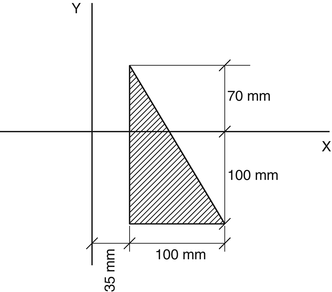
Fig. 4.32
-
2.
Find the centroid of the rectangle shown (Fig. 4.33) with respect to the x and y axes.
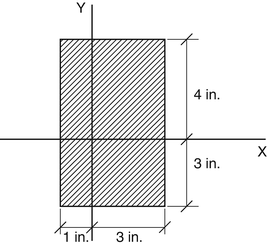
Fig. 4.33
-
3.
Find the centroid of the quadrant shown (Fig. 4.34) with respect to the x and y axes.
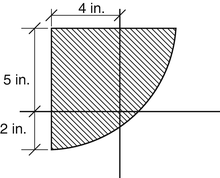
Fig. 4.34
-
4.
Find the centroid of the beam section shown (Fig. 4.35) with respect to the x and y axes.
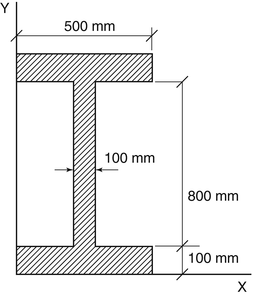
Fig. 4.35
-
5.
Find the centroid of the composite area shown (Fig. 4.36) with respect to the x and y axes.
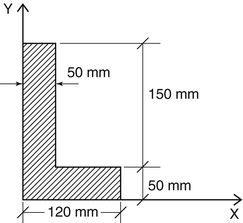
Fig. 4.36
-
6.
Find the centroid of the composite area shown (Fig. 4.37) with respect to the x and y axes.
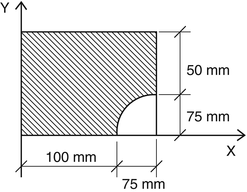
Fig. 4.37
-
7.
Find the centroid of the composite area shown (Fig. 4.38) with respect to the x and y axes.
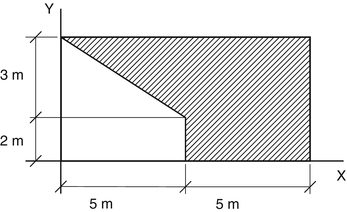
Fig. 4.38
-
8.
Find the centroid of the composite area shown (Fig. 4.39) with respect to the x and y axes.
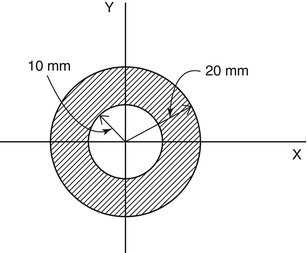
Fig. 4.39
-
9.
Find the centroid of the hollow shape shown (Fig. 4.40) with respect to the x and y axes.
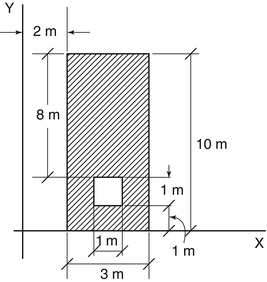
Fig. 4.40
Rights and permissions
Copyright information
© 2015 Springer International Publishing Switzerland
About this chapter
Cite this chapter
Ghavami, P. (2015). Centroid of an Area. In: Mechanics of Materials. Springer, Cham. https://doi.org/10.1007/978-3-319-07572-3_4
Download citation
DOI: https://doi.org/10.1007/978-3-319-07572-3_4
Published:
Publisher Name: Springer, Cham
Print ISBN: 978-3-319-07571-6
Online ISBN: 978-3-319-07572-3
eBook Packages: EngineeringEngineering (R0)










